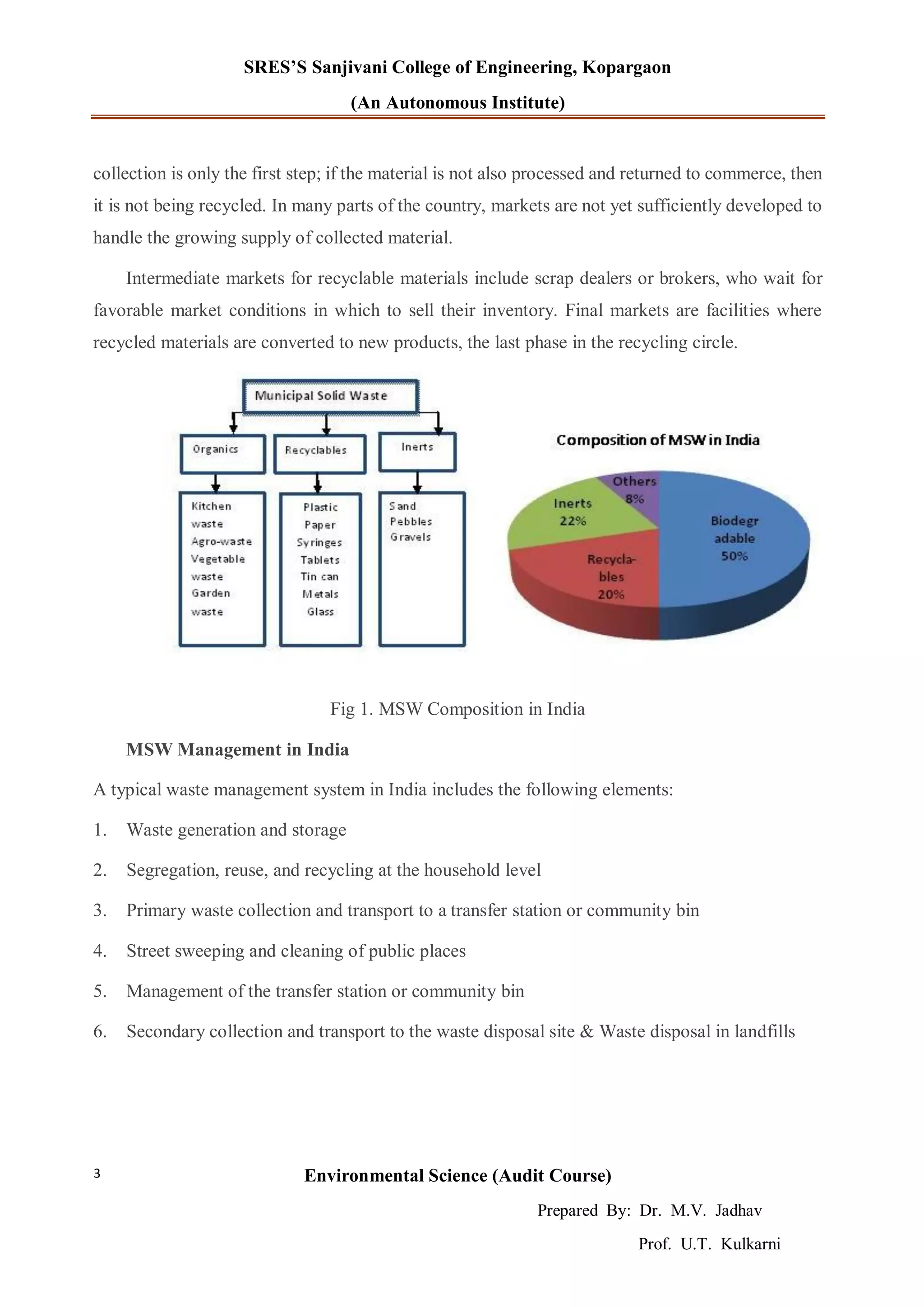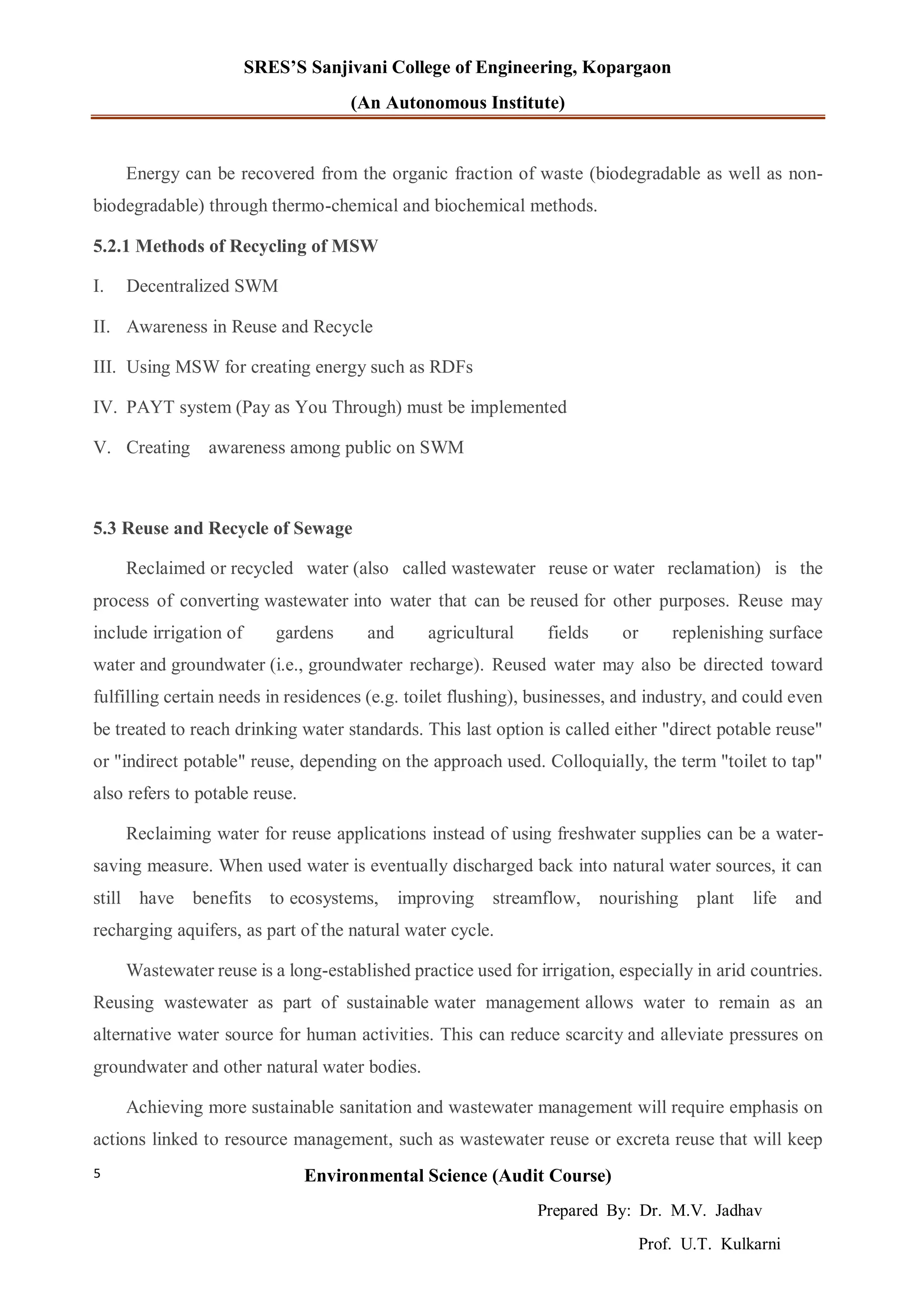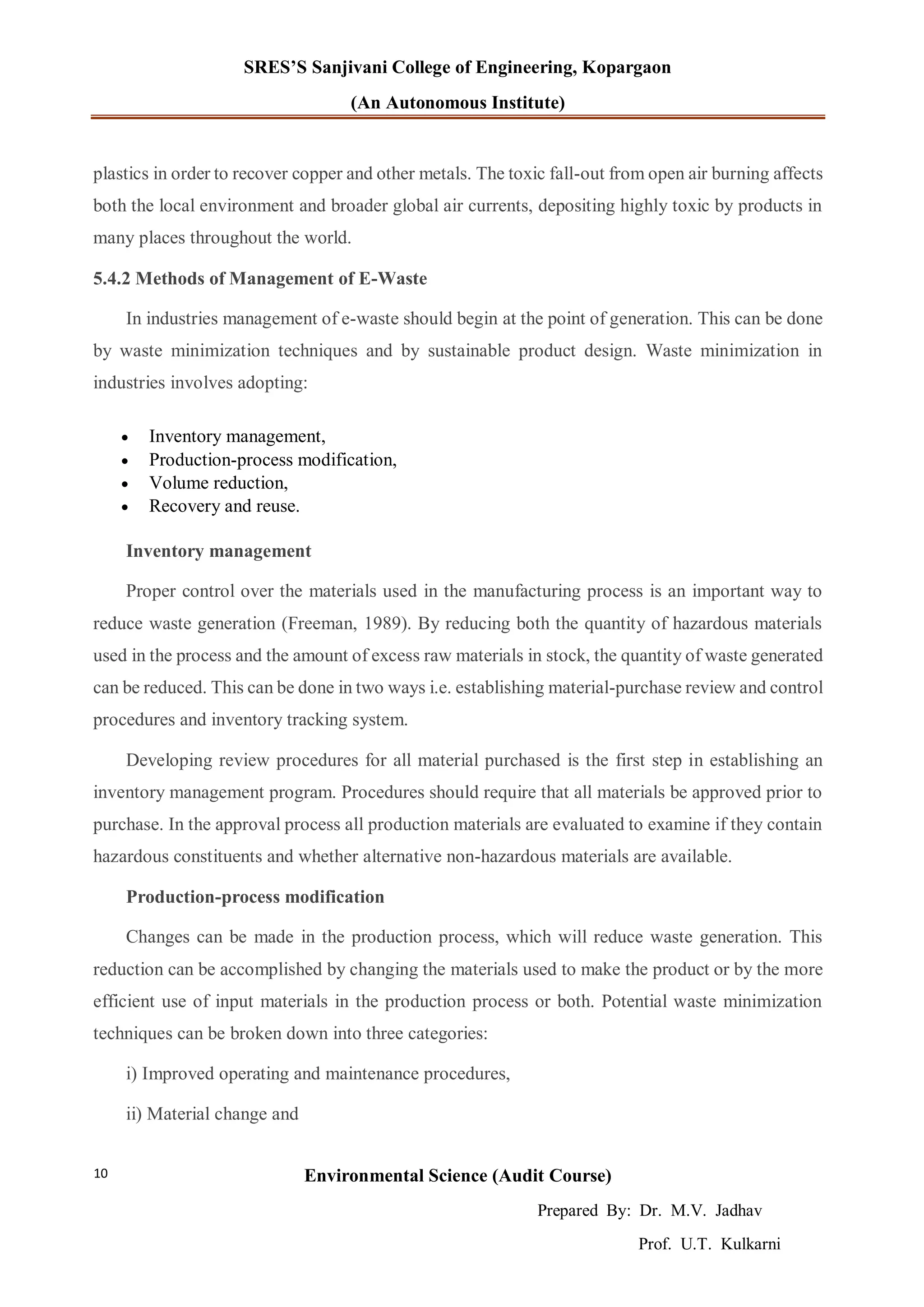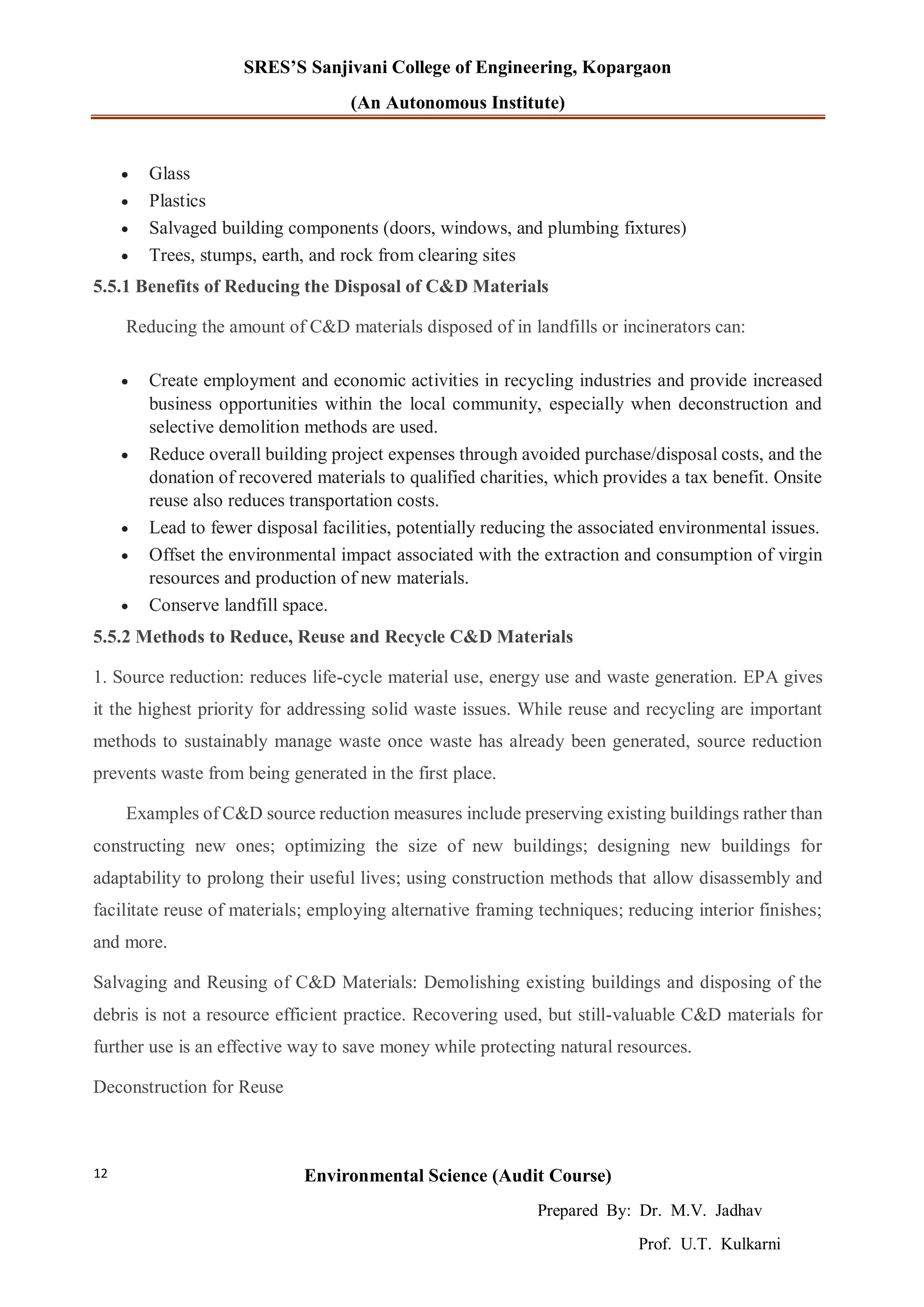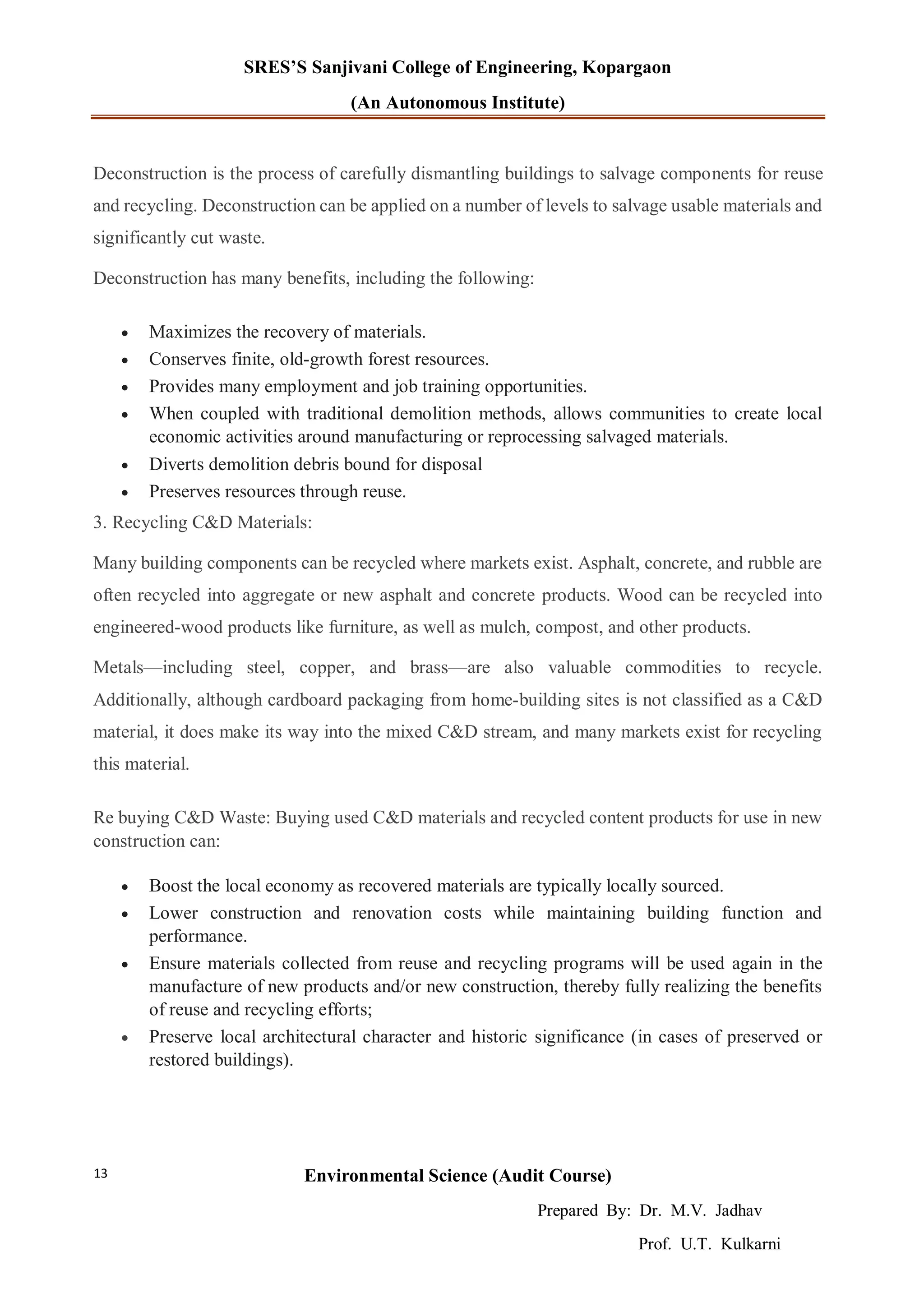The document discusses the importance of recycling and reusing municipal solid waste, sewage, and e-waste. It notes that recycling is important for reducing pollution, conserving resources and energy, and preserving landfill space. The document outlines methods for recycling these wastes, including decentralized collection, public awareness campaigns, using waste to create energy, and pay-as-you-throw systems. It also discusses the composition and management of municipal solid waste in India as well as the potential health and environmental effects of improper e-waste disposal.


